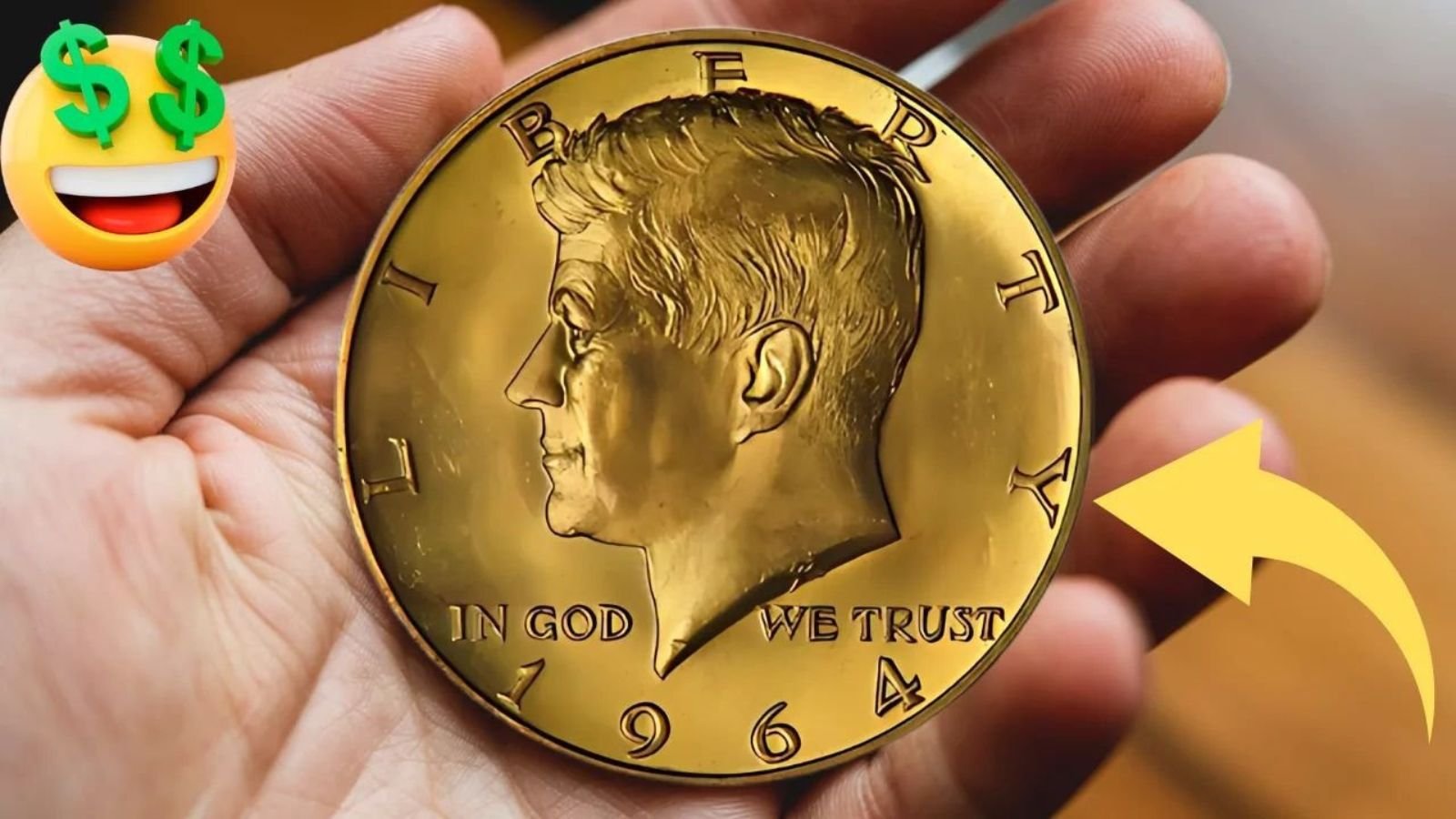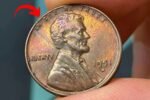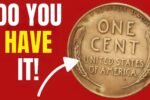What began as an ordinary spring-cleaning project in a small Pennsylvania town quickly turned into an unforgettable family moment—one laced with history, emotion, and unexpected fortune. While sifting through an aging garage filled with memories, rusted tools, and decades of dust, one family stumbled upon something remarkable. Nestled inside a creaky, weathered toolbox was a coin unlike the others: a 1964 Kennedy Half Dollar. At first glance, it looked like any other half dollar, but closer inspection revealed it was far more than spare change—it was a rare treasure now worth over $50,000.
But this isn’t just a tale of luck or money. It’s a deeply human story about connection, heritage, and how something as small as a coin can hold immense meaning. And for anyone who’s ever ignored the change rattling around in a drawer or tucked inside an old jar, this story might just make you take a second look.
UK £250 Cost of Living Payment Set to Be Credited in May 2025 – Full Details Inside!
Step 1: A Dusty Garage Yields an Unexpected Treasure
It was a quiet Saturday afternoon when the discovery occurred. The family, grieving and reminiscing, had gathered to clean out their late grandfather’s garage. His workbench was cluttered with remnants of a bygone era: rusted nails, old license plates, forgotten tools, and containers filled with miscellaneous odds and ends. Nothing seemed particularly valuable—until they opened an old metal toolbox tucked beneath a rickety shelf.
Inside the toolbox, buried under pliers and broken screwdrivers, they found a small tin box filled with coins. Most were run-of-the-mill change—pennies, nickels, and a few outdated quarters. But one coin stood out. It was noticeably larger, had a silvery tone, and carried a distinct year: 1964. Embossed on the front was the iconic profile of President John F. Kennedy. A Kennedy Half Dollar.
At first, the coin seemed like a sentimental keepsake, maybe tucked away by their grandfather as a tribute to JFK following his tragic assassination in 1963. But one detail caught the eye of the family’s college-aged son, who had recently taken an interest in numismatics. He noticed something strange about the coin’s design—Kennedy’s face appeared slightly doubled, almost blurred.
That tiny, subtle imperfection would prove to be life-changing.
Step 2: A Rare Coin Error Confirmed by a Professional Dealer
Driven by curiosity, the family decided to take the coin to a reputable local coin dealer. The expert’s reaction was immediate and astonished. What they had wasn’t just a collectible coin—it was a Kennedy Half Dollar featuring a double die obverse error. This rare minting error occurs when the coin is struck twice with a slightly misaligned die, causing parts of the design—like the date, lettering, or facial features—to appear doubled.
Collectors prize these error coins, and among Kennedy Half Dollar enthusiasts, the 1964 double die version is considered a significant find. This error is especially rare because it only appeared in a limited number of coins produced during that first year of minting. Combine that with the coin’s excellent condition—likely preserved by years of lying undisturbed in the metal box—and its value surged.
The dealer estimated that this specific Kennedy Half Dollar could fetch more than $50,000 in today’s market.
Step 3: The Historical Significance of the Kennedy Half Dollar
To understand why the 1964 Kennedy Half Dollar is so coveted, one must appreciate its historical context. After the shocking assassination of President John F. Kennedy in November 1963, the U.S. Mint moved quickly to honor his legacy. By early 1964, the Kennedy Half Dollar was introduced, replacing the Franklin Half Dollar.
The 1964 version was particularly special because it was struck with 90% silver, a composition that changed in subsequent years due to rising silver prices. As a result, 1964 Kennedy Half Dollars have both historical and intrinsic value. Millions were minted, but only a small fraction contain rare errors like the double die obverse.
This first-year minting, combined with its tribute to a beloved American president and its high silver content, has made the 1964 Kennedy Half Dollar one of the most desirable coins in American numismatics.
Step 4: A Coin Becomes a Family Heirloom
Despite the coin’s astonishing value, the family didn’t rush to sell it. Instead, what resonated most was the emotional connection. This wasn’t just a coin; it was a bridge to the past—a silent but powerful reminder of their grandfather’s life. A man who never talked about money, never boasted, and likely had no idea the coin he set aside would one day be worth thousands.
The family decided to have the Kennedy Half Dollar professionally graded and encapsulated to preserve its condition. Rather than treat it as a mere financial asset, they chose to keep it as a family heirloom—a symbol of legacy, love, and unexpected wonder. It now holds a place of honor in their home, a lasting tribute to both President Kennedy and their grandfather.
Step 5: A Growing Trend—America’s Buried Coin Fortunes
Believe it or not, this Pennsylvania family’s story is not entirely unique. Across the country, people are discovering valuable coins in the most unlikely places: mason jars, junk drawers, coat pockets, and forgotten piggy banks. With shows like Pawn Stars and Antiques Roadshow inspiring curiosity, a growing number of Americans are exploring old belongings for hidden treasures.
Coin collecting is undergoing a renaissance, especially among younger generations who are drawn to both the historical narratives and the potential for profit. And the Kennedy Half Dollar remains a staple in this resurgence, prized not just for its beauty, but also for its link to a pivotal moment in U.S. history.
Dealers and numismatists report an uptick in walk-in clients carrying bags of coins, hoping to uncover something special. And in many cases, they do—because the U.S. Mint has produced countless coins over the decades, some of which carry rare errors or low mintages that now command high premiums.
Step 6: Are You Sitting on a Fortune?
Inspired to search your own home? Here are a few tips that might help you spot a valuable coin:
-
Check the Year: Key years like 1964 for Kennedy Half Dollars, 1943 for Lincoln pennies, and 1916 for Mercury dimes are often associated with rare or valuable editions.
-
Look for Errors: Doubling, off-center strikes, misprints, and die cracks can all increase a coin’s value significantly. Use a magnifying glass or a jeweler’s loupe to inspect your coins closely.
-
Mint Marks Matter: A tiny letter—such as “D” (Denver), “S” (San Francisco), or “P” (Philadelphia)—can indicate the mint of origin. Some mint marks denote more desirable coins, especially if fewer were produced at that location.
-
Preserve Condition: Coins in “uncirculated” or “mint” condition command much higher prices. Never clean your coins, as scrubbing or polishing can destroy value. Instead, store them in acid-free holders or sealed coin flips.
-
Seek Professional Grading: If a coin seems unusual or in excellent condition, consider submitting it to a certified grading service like PCGS or NGC. Graded coins carry more credibility and are easier to sell to collectors.
Final Thoughts: A Small Coin With a Huge Story
For one Pennsylvania family, a routine afternoon of cleaning uncovered a literal and emotional treasure. Their Kennedy Half Dollar didn’t just bring unexpected wealth—it reconnected them with their roots, sparked new interests, and reminded them that even the most ordinary objects can hold extraordinary significance.
This story is a beautiful testament to the value of curiosity and the richness of family history. It invites all of us to take a closer look at what we might have overlooked—because hidden in your own attic or basement could be a coin that tells a story worth far more than its face value.
So the next time you come across an old coffee can full of change or a forgotten drawer in a family garage, don’t dismiss it. Pick up each coin, examine it with care, and imagine the journey it might have taken. You might just be holding your very own Kennedy Half Dollar—and with it, a priceless piece of history.














